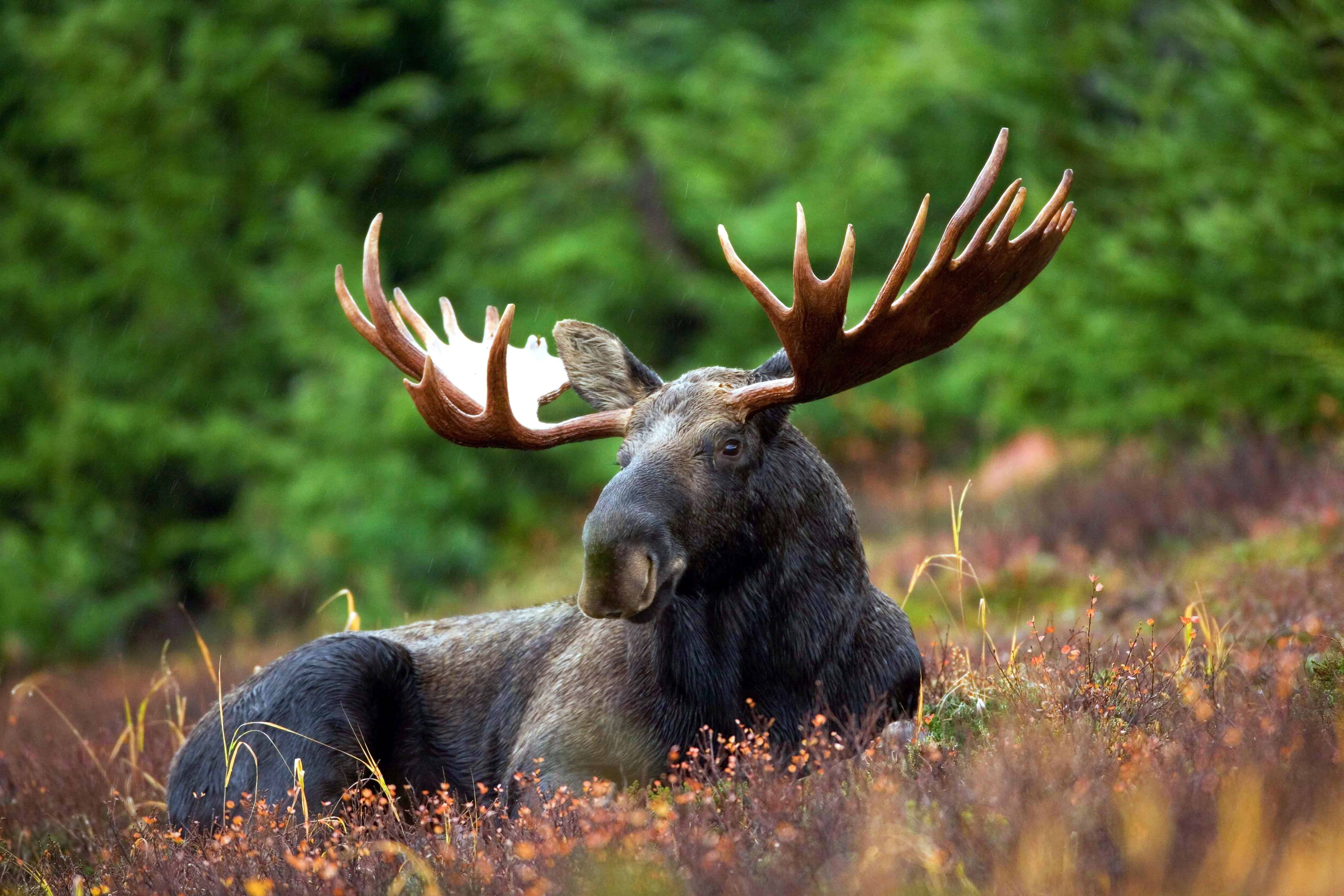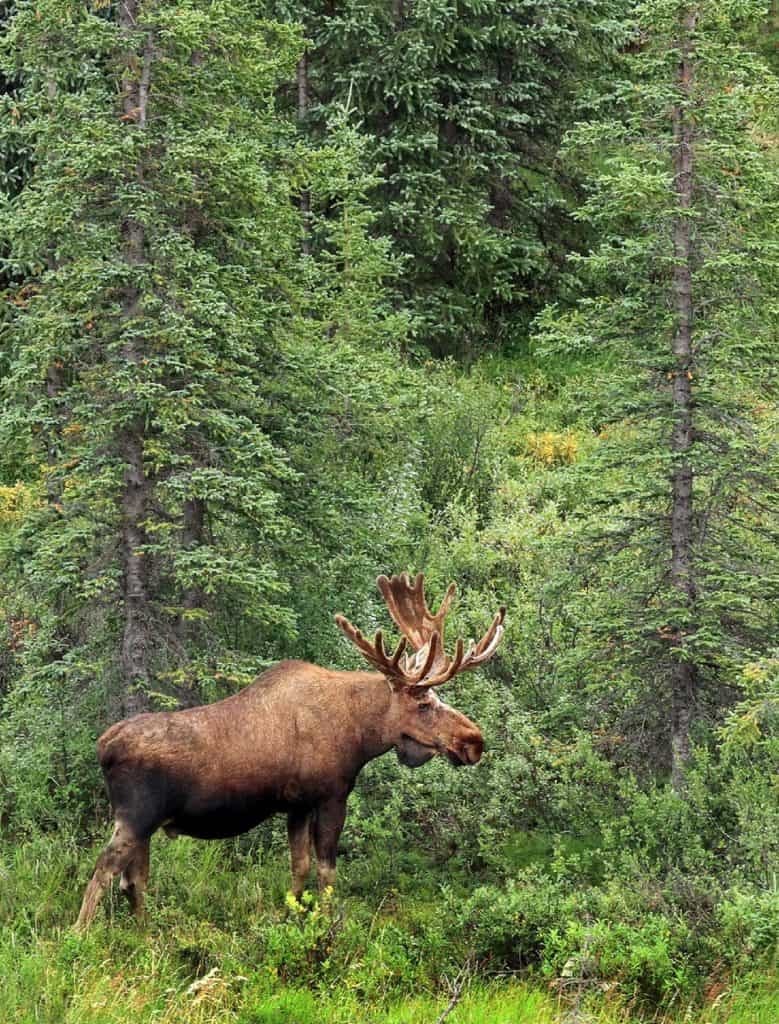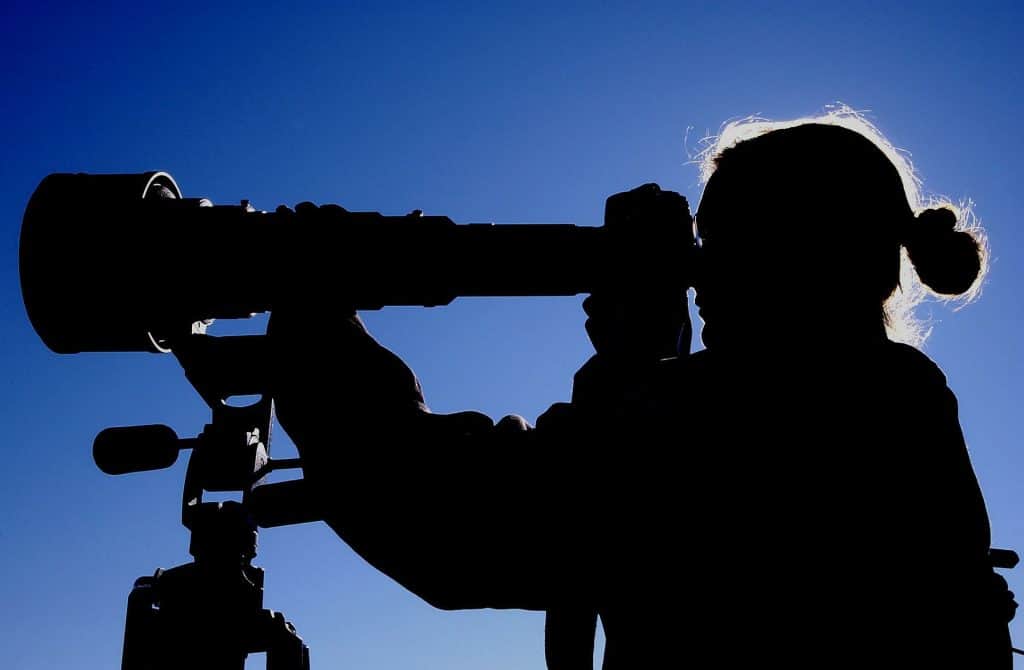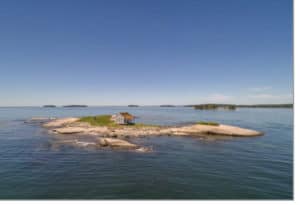
Written by Stephen Ondich
Moose size has long fascinated visitors to Maine. To many people from away, the moose is an almost mythical creature. So, how big is a moose? Most people know moose through pictures in books and online images. However, those perspectives rarely show the magnitude of these enormous creatures. Moose are huge.
↓ Subscribe to Our YouTube channel NOW ! ↓

Moose Habitat in Maine
Location
Most moose stay at least 50 miles North of Acadia National Park.
Moose Size Depends on Region
While all moose are large, there are regional differences that affect size. The individual specie sizes are a function of their environment. Moose are basically, very large deer, believe it or not. However, there are 4 species within North America.
- Alaskan Moose. Alaskan Moose are sometimes referred to as Giant Moose. Not surprisingly, they are the largest of the four moose subspecies and live in Alaska. How big is a moose? Male Alaskan Moose measure up to 6 feet 9 inches in height at the shoulder. To put it in perspective, most NBA basketball players could easily limbo under a standing moose. Alaskan Moose weigh up to 1400 LB. Also, their antlers extend just under 6 feet in width.
- Northwestern Moose. The Northwestern Moose is found in a few Northern US states and throughout central Canada. How tall is a moose? They grow to a height of 6 feet 4 inches at the shoulder. They weigh up to 1590 LB.
- Shiras Moose. The Shiras Moose is found from Utah through Idaho in the United States. Additionally, they live in British Columbia. They are the smallest subspecie of moose. Shiras range in size from 36-55″ tall from hoof to shoulder. Additionally, they weigh up to 1200 LB.
- Eastern Moose. Maine’s own Eastern Moose can be found in Eastern Canada and the Northeastern portions of the United States. It is the third largest moose subspecie, behind Alaskan and Western Moose. They stand up to 6 feet 6 inches tall at the shoulder. Their weight reaches up to 1400 LB.
Where are the Biggest Moose in Maine?
Moose can be seen throughout the state, but their population is greatest in the Western Lakes and Mountains, The Kennebec Valley, The Maine Highlands, and Aroostook County. The best times to spot them are at dusk and dawn from mid-May through July and again in the fall during their breeding season.
Are There Moose in Acadia National Park?
The answer is sometimes but not often. Additionally, when there are moose in Acadia National Park, it’s not for a good reason.
A few month ago, I wrote an article titled Are There Moose in Acadia National Park? Check it out to read more about moose sightings in Acadia.
One Reason Why Moose are Large
Moose grow throughout their lifetime. However, significant body mass stops accumulating when males are 9 years old and females are 4 years old.

Moose Leg Size Makes Them Fast Runners
Not surprisingly, moose are very agile animals with long spindly legs. Moose can run up to 35 miles an hour. That is roughly the speed of a small motorized scooter.
Additionally, they have a high level of stamina. This is surprising considering their body mass. For example, moose swim continuously for up to 10 miles at a time.
This combination of leg size, overall mass and stamina makes a dangerous projectile.
Large Moose Have Large Appetites
Moose consume a lot of calories to maintain their large size. According to Mental Floss, they eat up to 73 pounds of food daily in the summer. During the winter, they cut back to a paltry 34 pounds a day. That is a wide annual range of food consumption. However, they do so to maintain their optimal amount of body mass. Like the cow, they have four stomachs for digestion.
What do Moose Eat?
The word moose is a Native American word. Roughly translated, it means eater of twigs.
Thus, they are vegetarians. Their diet consists of fauna, leaves, bark, etc. Basically, they graze around all day eating plants that they run into. Accordingly, maybe the lack of green vegetation during winter is why their caloric intake drops!
Moose Antler Size
In addition to their impressive body mass, moose have massive antlers, too. Again, it’s difficult to put antler size in perspective when they are attached to a massive animal. The antlers look proportional.
A mature set of antlers can weigh up to 40 pounds by itself. Additionally, antlers can reach a span of up to six feet wide.

What Are Antlers Used For?
Moose use their antlers to intimidate their rivals, impress potential mates and fight.
Their antlers grow in a way that forms a protective mask around their face. Fully grown antlers protect the moose’s eyes during combat.
In fact, as moose grow, their antlers reveal clues about their social status. Generally, speaking, the larger the antlers, they higher the social status of the moose.
You can read more regarding moose antler science at All-About-Moose.
Are Moose Dangerous?
Moose are dangerous in the same way that elephants and pit bulls are dangerous. Typically, they are docile and not-aggressive. However, if they become aggressive, they can cause serious damage to their foes.
Moose are capable of killing bears during combat. Therefore, you should not underestimate the force moose a capable of producing in a confrontation.
Read this British citizen’s firsthand amazement at the size of North American moose. Clearly, they are intimidating to see in person.
When Are Moose Most Dangerous?
You are most likely to encounter a moose attack during the months of September and October. Not surprisingly, these months are prime mating season for moose. Moose typical become hostile toward humans when their young calves are involved. Thus, take special care to keep your distance during the mating season.
Statistically speaking, moose are most likely to injure you during an automobile collision. However, for the purposes of this article, we are only examining moose encounters in nature.
Moose Combat
When moose become aggressive, here are things they may do:
- Stand their ground.
- Kick their long legs at their target
- Run to safer ground.
- Gore you with its antlers.
Although being gored by a pair of 6 foot wide antlers sounds horrific, trampling is your most likely scenario and danger. Even if the moose is the moose is simply trying to flee, it may run you over in the process. Again, the force of a charging moose can be fatal.
There are a few signs that reveal when a moose is agitated and likely to attack.
- Licking its lips.
- Raising the hair on its head and neck.
- The moose changes its behavior after looking at you.
Now, if you are close enough to see the moose licking its lips you are probably too close, anyway. However, if you spot these signs, take that as a final warning to clear the area.
What To Do When Being Attacked by Moose
- Run. Get behind a tree or something solid, if possible.
- Play dead and curl up in the fetal position. If you cannot find a tree or anything else to shield you from the moose, curl up in the fetal position. Make sure to protect your head and vital organs as the moose may step on, kick or gore you with its antlers.
- Wait. Unless you’re up for a second round of combat, make sure that the moose has cleared the area before getting up off the ground. Moose may watch you for a while before actually leaving the area. Be cautious when making your escape.
Moose Size, Speed and Force: Physics of a Moose Collision
To this point, we have established that moose are very large creatures. Additionally, they are fast runners.
Let’s examine the physics involved in a moose collision. Hopefully, this is theoretical only.
When I played football, I commonly measured up the size and speed of the opposing player who lined up in front of me. Although we both started at zero miles per hour, when the whistle blew we both accelerated to drive each the other out of the way. Size helped but speed could compensate.
This formula explains why you should keep a safe distance from moose. Despite their normally docile behavior, a spooked or angry moose can cause injury or death.
Man Collides With Moose
The average American man weighs 197 LB. Additionally, he can probably run about 12 miles an hour.
Let’s compare stats of an average man verses and average moose:
- First, moose weight is 1400 LB (635 KG). Man weight is 197 LB (89.36 KG).
- Second, moose’s velocity is 35 miles per hour (15.65 m/s). Man’s velocity is roughly 12 miles per hour (5.36 m/s).
Imagine a two men walking in the woods near Baxter State Park. They encounter a moose.
Faster than you can say “Hold my beer!” one man runs over to check out the moose up close. Startled, the moose charges forward. In a panic, the man turns and runs as fast as possible in the other direction. However, they soon collide!
First, the force of the moose = 635 KG x 15.65 meters/second squared = 9937.75 Newtons
Second, the force of the man = 89.36 KG X 5.36 meters/second squared = 478.97 Newtons
Basically, the man’s 478.97 Newtons slightly offset the moose’s 9937.75 Newtons.
To put this in perspective, the force of one newton feels like an apple dropping on you from a short distance. Unpleasant, but not dangerous.
Thus, being run down by a moose while fleeing in the opposite direction is roughly equivalent to being hit with a sack of 9938 apples. Not good.
However, when traveling in Maine, people want to see moose. If you must see a moose up close, invest in a good zoom lens, keep a safe distance and take beautiful nature pictures.




Pingback: 🌄Are There Moose in Acadia National Park? - Maine Terrain 2019
Heidi
19 Jul 2019I had no idea a moose could battle and bear and win. Yikes. Thanks for the information. As always, I enjoyed your article.